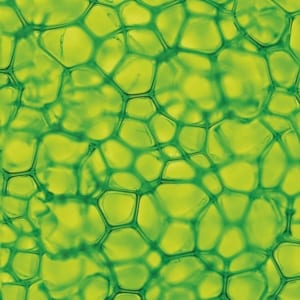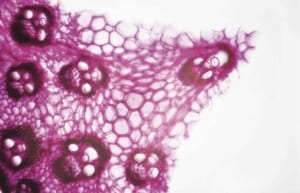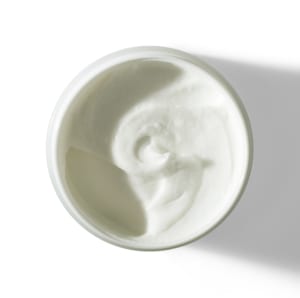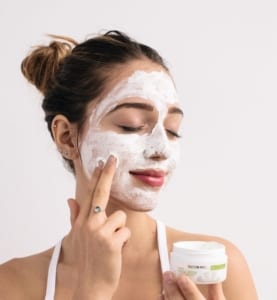Why does our skin lose elasticity as we age and what does this lead to visibly?

Overall, the amount of new collagen that your skin produces declines with age, while the rate of its destruction increases. Environmental aggressors are one of the main causes of aging skin damage and cancer. Daily aggressors like the sun, the air, pollution, exhaust, smoking, second hand smoke, radiation, the ozone, unclean skincare products (ingredients ie: phalates, mineral oil), ingested food and water all contribute to the demise of our healthy skin cells. Environmental aggressors deliver free radicals to the skin, which in turn cause the breakdown of collagen, onset of wrinkles, cell mutation, aging, dark spots, dehydration, inflammation, immune function damage and in some instances cancer.
By 25 years of age human production of collagen starts to naturally decrease, this increase even more for women post menopause. Collagen is one of three structural proteins that our bodies produce. Elastin and Glycosaminoglycans are the other two, which we will get to. Collagen is responsible for providing tissue and organs strength. As we age collagen is produced less and tissue begins to disconnect thus creating wrinkles, dryness and sagging skin. Elastin also plays a big role in aging, although not as plentiful in the skin as collagen, it is still important. Elastin is responsible for stretching abilities and ‘snapping back’, think of the word ‘elastic’. Once elastin starts to diminish, skin will look saggy, sunken and limp. Glycosaminoglycans are responsible for keeping collagen and elastin supported in the cellular space. Starting early is beneficial but the good news is it is never too late to start an anti-aging regimen!
What are the most effective topical ingredients to seek in elasticity-promoting skincare ingredients?
- Vitamin B3 is one of the most effective ingredients in reducing collagen breakdown while simultaneously increasing fibroblast production. Vitamin B appears in just two main forms: nicotinic acid (also known as niacin) and nicotinamide (also called niacinamide).
- The ability of vitamin C to revitalize aging skin is largely due to its beneficial effects on collagen. Collagen is a tough, fibrous protein that is relatively inelastic and very strong. It supplies the basic framework that gives your skin its form, firmness, and strength, while elastin provides flexibility. Fortunately, topical vitamin C has been scientifically proven to help stimulate collagen synthesis. It also helps block the production of enzymes the break down collagen, making it one of nature’s most effective anti-aging nutrients.
- Plant-based stem cells contain high levels of active proteins, which work topically to regulate the stem-cell division in our skin cells. They essentially act as a massive protective barrier for the skin to allow our cells to regenerate at a healthy speed without being compromised by external factors including pollution and UVA/UVB rays. They aid in the reduction of the appearance of wrinkle depth, the appearance of fine lines and wrinkles, an even complexion, plumper appearing skin and the longevity of healthy human skin cells. Some of my favorites to formulate with (found in our proprietary PURFLORA complex) are Raspberry Leaf Extract, Comfrey Stem Cells, White Tea Leaf Extract, Garden Crest Sprouts and Birds of Paradise extract.
- Retinol is a form of Vitamin A. Retinol can improve the appearance of lines and wrinkles and increases collagen production. Retinol delivers an overall tighter, firmer, plumper appearance to the skin.
What are some of the best types of food to eat for healthy skin, and what are the benefits of each?
Eating fried foods, processed foods and sugar can wreak havoc on your skin causing puffiness, redness, blemishes, blotchiness, and in all cases Glycation. The Glycation process is sugar (from food and alcohol) breaking down the collagen fibers in the skin and speeding up the aging process – think premature wrinkles and loss of elasticity. Eating ‘superfoods’ will benefit the internal health as well as the external glow.
Salmon: rich in Omega-3 fatty acids is none of the most beneficial due to its ability to greatly reduce inflammation and dryness and increase circulation – a key attribute to healthy, youthful-looking skin.
Fermented foods: Think kimchee, sauerkraut or pickled vegetables. These foods contain probiotics which help keep the gut healthy. A healthy gut helps the digestive system and immune system. Probiotics have been shown to help with skin issues such as eczema, rosacea, acne and aging skin.
Foods rich in antioxidants: Leafy green blueberries, blackberries, avocado, broccoli, nuts. These all contain high levels of antioxidants which are crucial for overall help and fighting off free radical damage.
Are there any other holistic treatments or lifestyle practices that can also promote elasticity outside of our skincare regimen?
The Sun is the number one environmental damage for skin. Both UVA/UVB rays are harmful. Protect yourself by wearing a hat and sunglasses. Shielding your skin, head and eyes can help with sun damage and pollution-based aging. Always wash you face to remove the residue and makeup from the day.
Eat a diet high in anti-oxidant rich foods such as leafy greens and berries and foods high in essential fatty acids (salmon and almonds). Stay away form foods that can encourage and cause Glycation. The Glycation process, which is basically, sugars (from food and alcohol) breaking down the collagen fibers in the skin and therefore speeding up the aging process. Foods that feed Glycation and cause inflammation in the body and the skin are carbohydrates, fried foods, sugar, fatty meats and alcohol.
Exfoliation is a must! As you grow older, the rate of skin cell turnover slows down dramatically. Dead cells on your skin’s surface hang around much longer, a fact that tends to accentuate those fine lines and make your complexion look dull and lifeless. By removing these dead skin cells, exfoliation helps make up for the gradual slowing down of your natural skin renewal process, improving the tone and texture of your skin.
Are there any supplements that you would suggest incorporating into a regime to help boost the body’s overall ability to support overall skin health?
am a big proponent of vitamins and recommend them to my patients, friends and family. Vitamin D, my personal favorite, more closely resembles a hormone than a vitamin. The active form of vitamin D, called calcitriol, is the most powerful hormone produced by the human body. It has the ability to activate over 2000 genes, many of which are involved in critical aspects of skin cell metabolism, growth, repair, and protection. Vitamin D in addition to being a key factor in skin cell growth and replacement, vitamin D also plays a major role in skin repair and protection (and can be found in our Vital Boost product). When microorganisms attack the skin, they secrete certain extracts that stimulate your skin to produce vitamin D. This vitamin D signals your skin’s innate immune system to start manufacturing a substance called cathelicidin, a very powerful germicide. Cathelicidin disrupts the integrity of bacterial cell membranes, resulting in the death of the microbes. Cathelicidin also helps promote the development of blood vessels and encourages new cell growth, both of which are essential for proper wound healing.
Probiotics: Ingesting daily probiotics is one of the healthiest supplements. Probiotics keep the gut bacteria and yeast in balance while targeting inflammation, strengthening immune functions, allergies and urinary tract health. Probiotics are beneficial for certain skin issues as they can help decrease redness and the formation of fine lines and wrinkles. Probiotics also aid in increasing elasticity of the skin and smoothness.
Glucosamine: Delivers anti-inflammatory and antioxidant effects in promoting joint health, crucial as we age.
Curcumin: A powerful compound found in the Turmeric plant, Curcumin may help to prevent heart disease, Alzheimer’s and cancer. Curcumin delivers super high levels of potent anti-inflammatory and antioxidant protection.
LED lights, micro-current, regular exercise, and lymphatic drainage can all help to ward off and decrease the appearance of aging and sagging skin.



